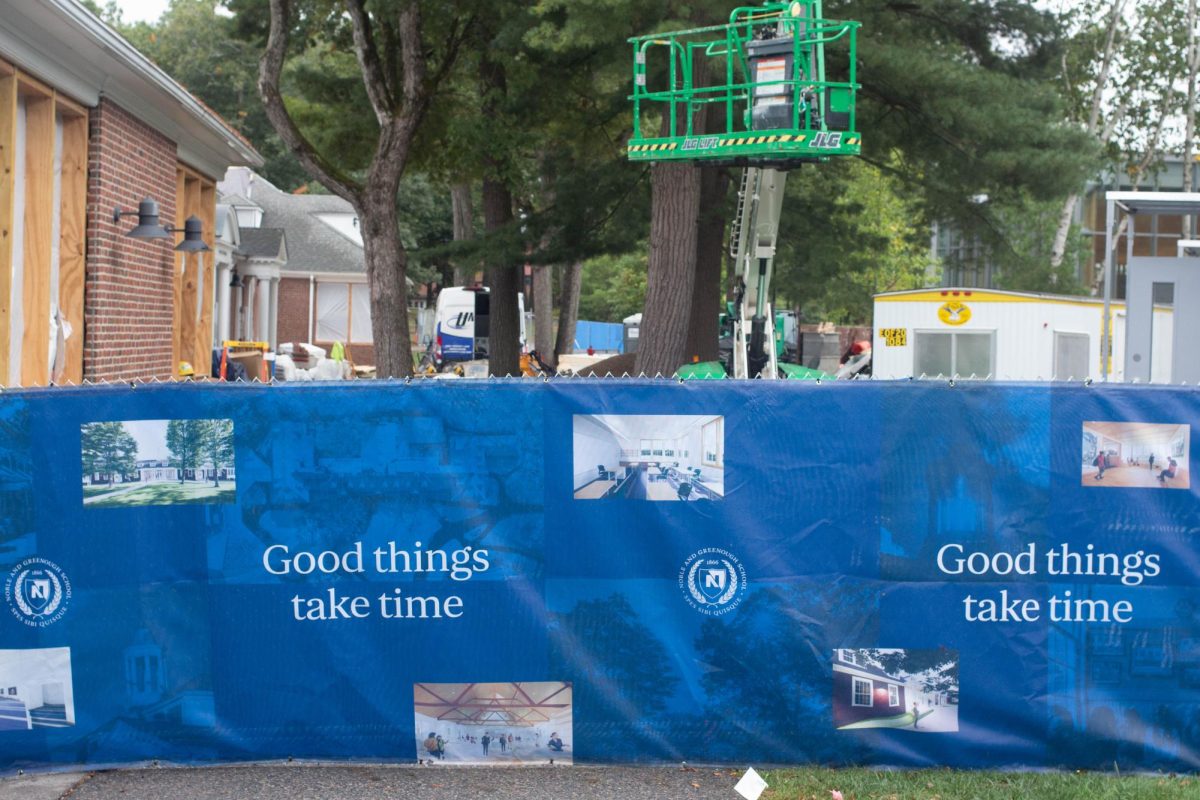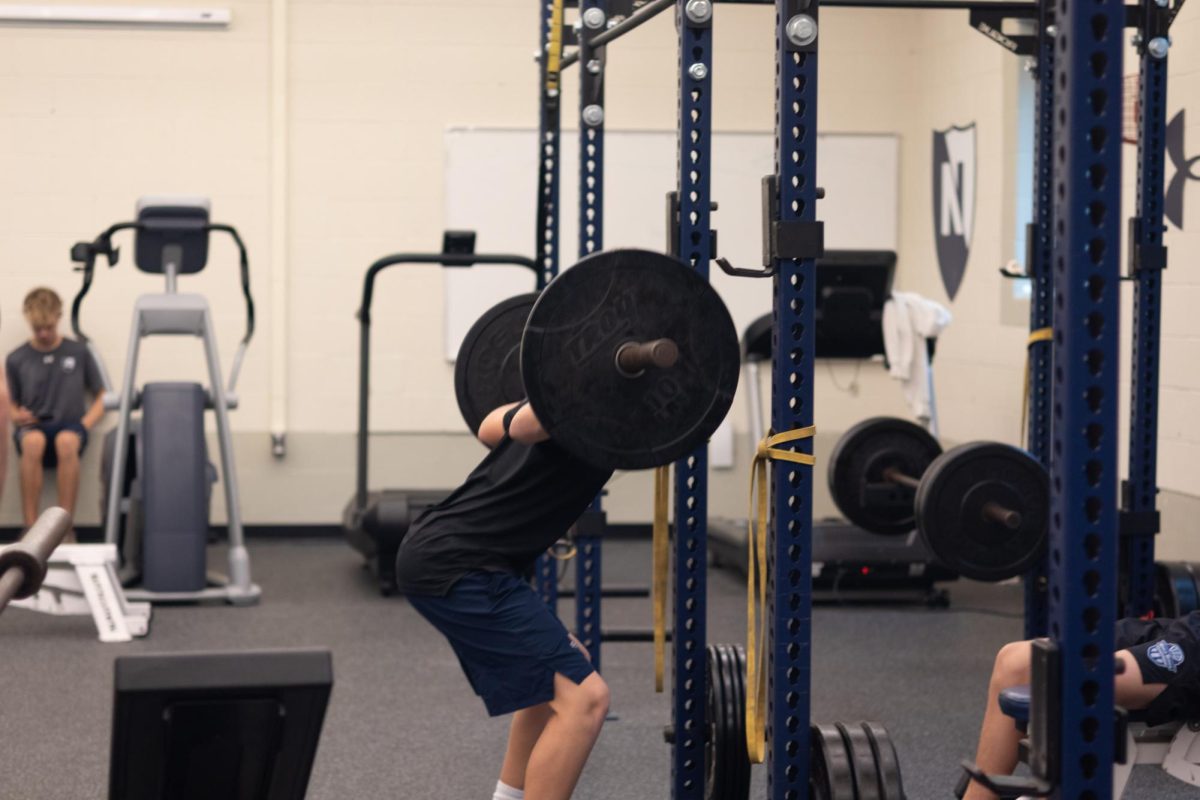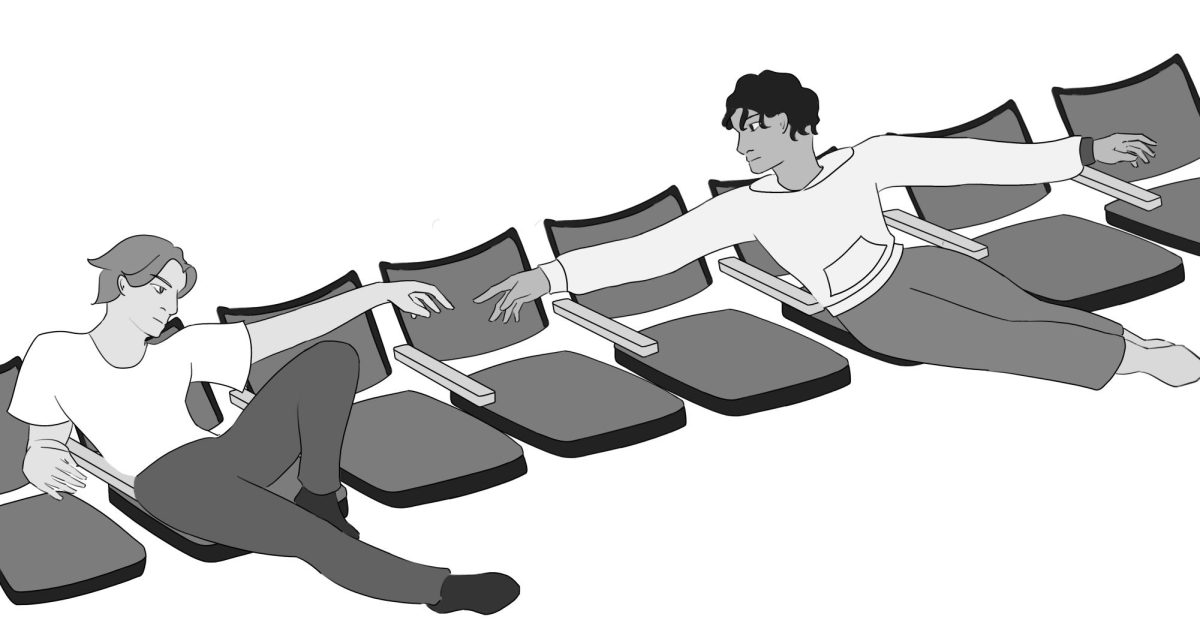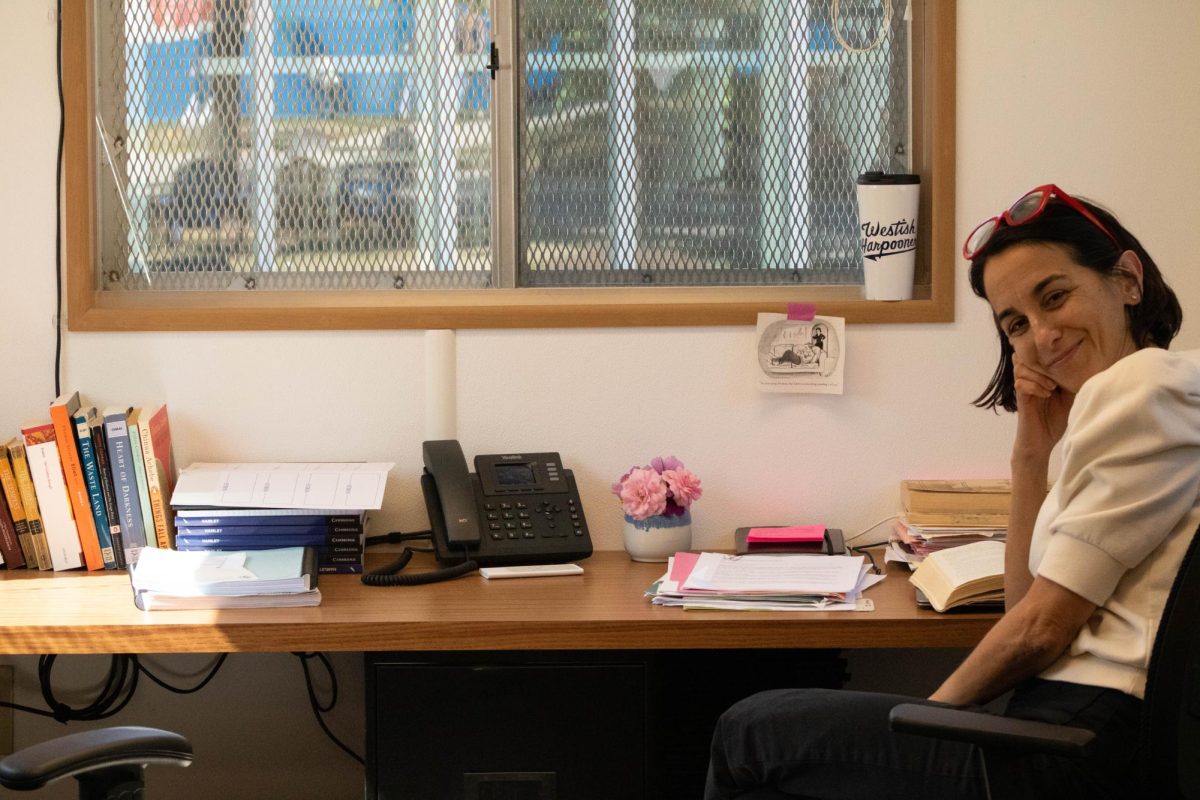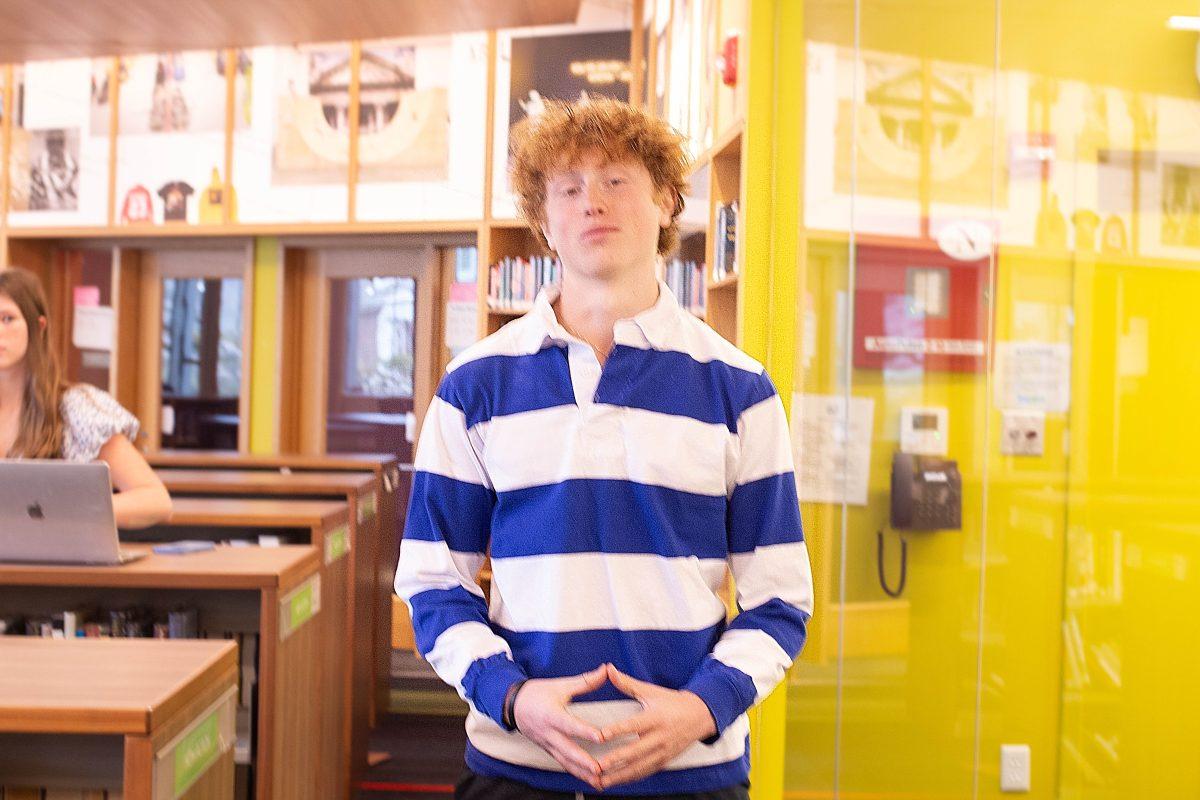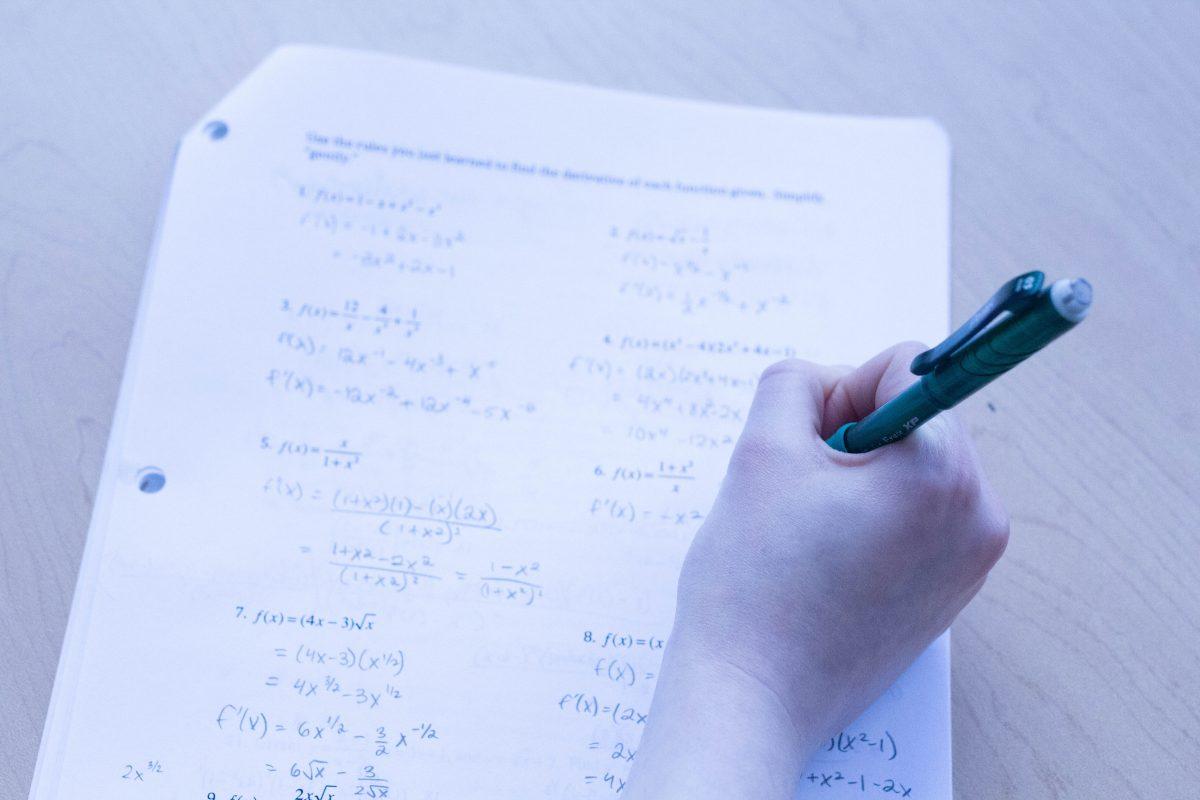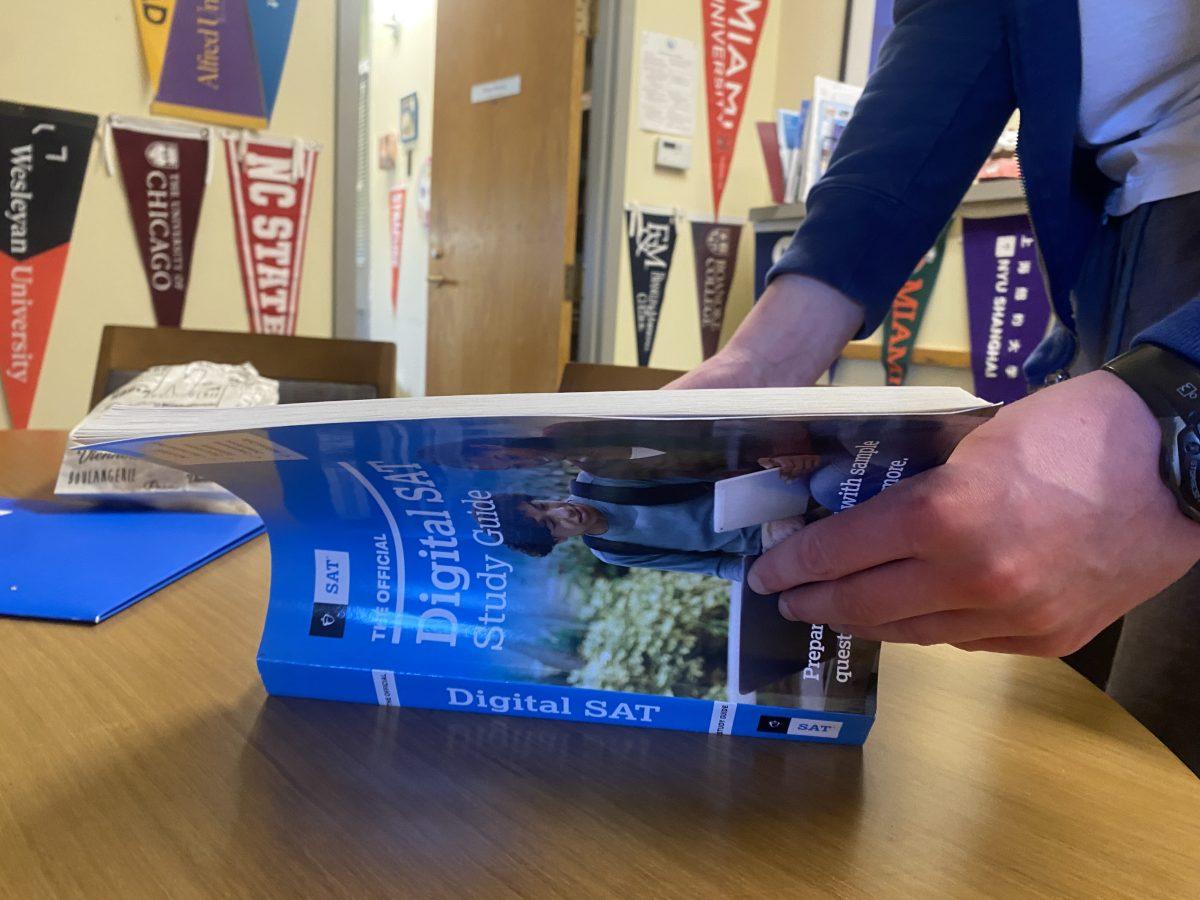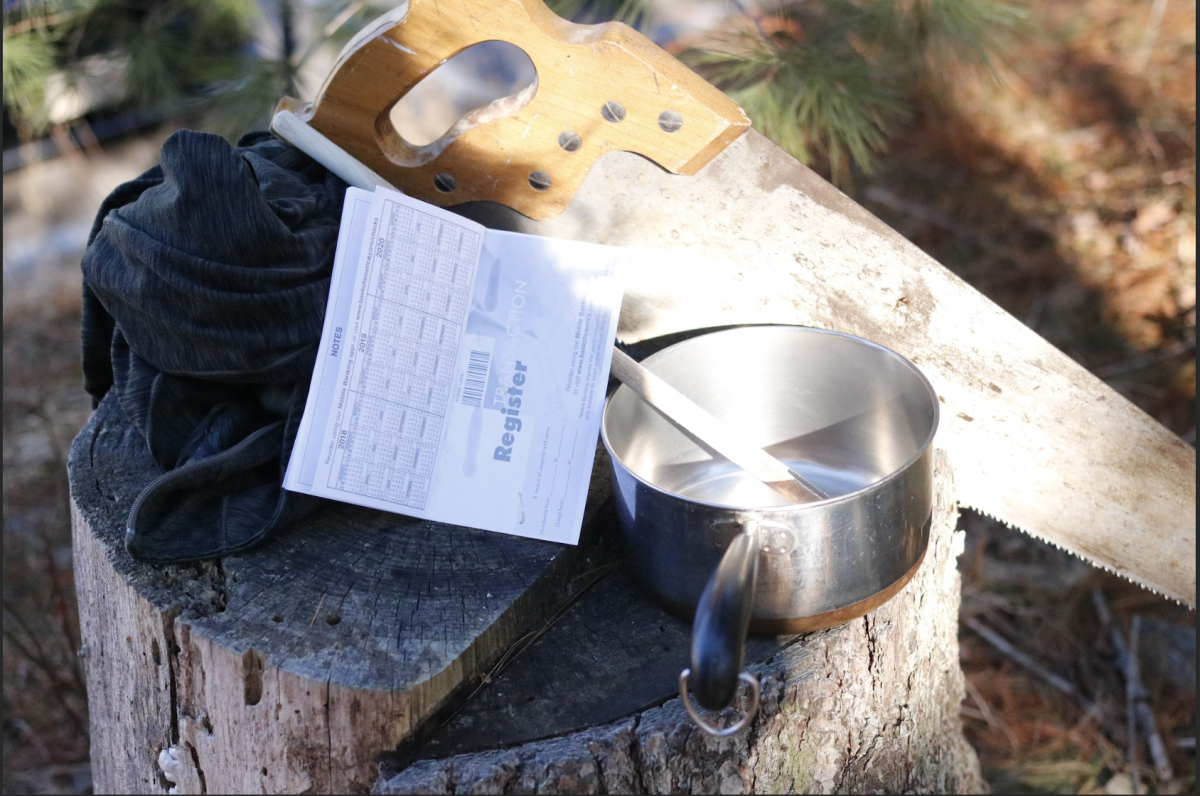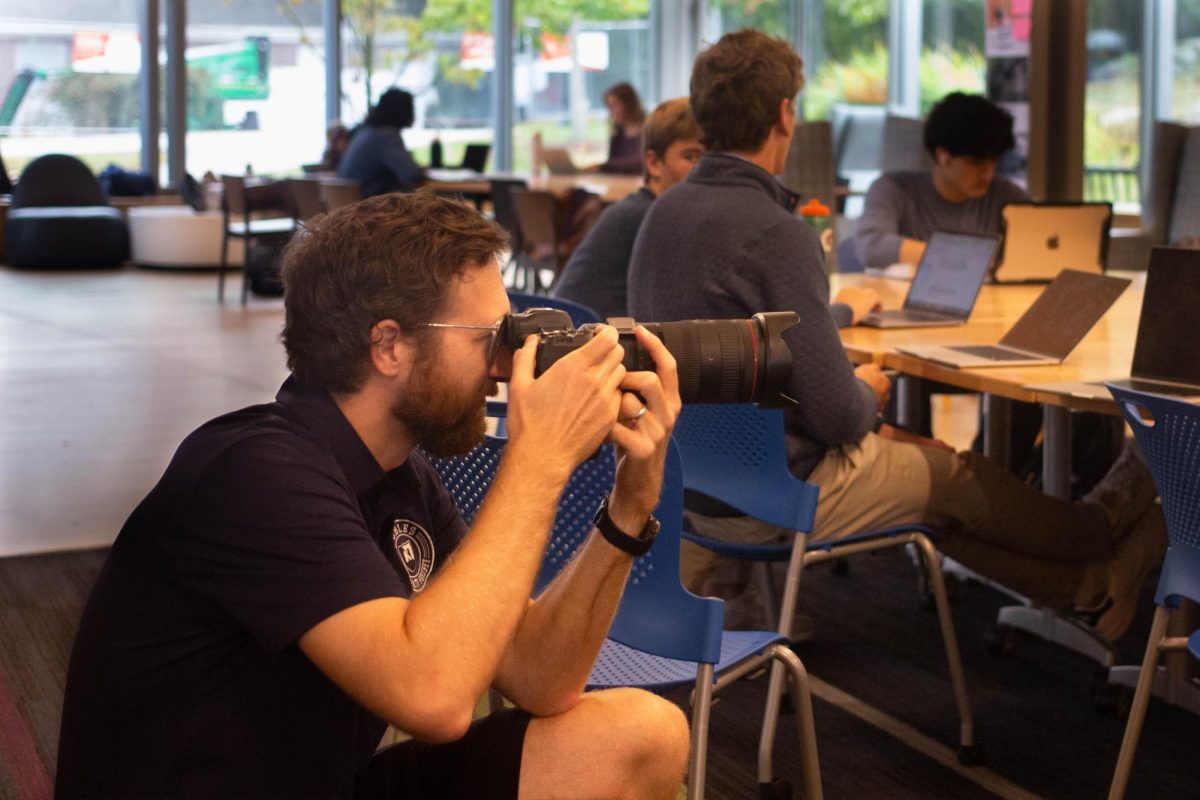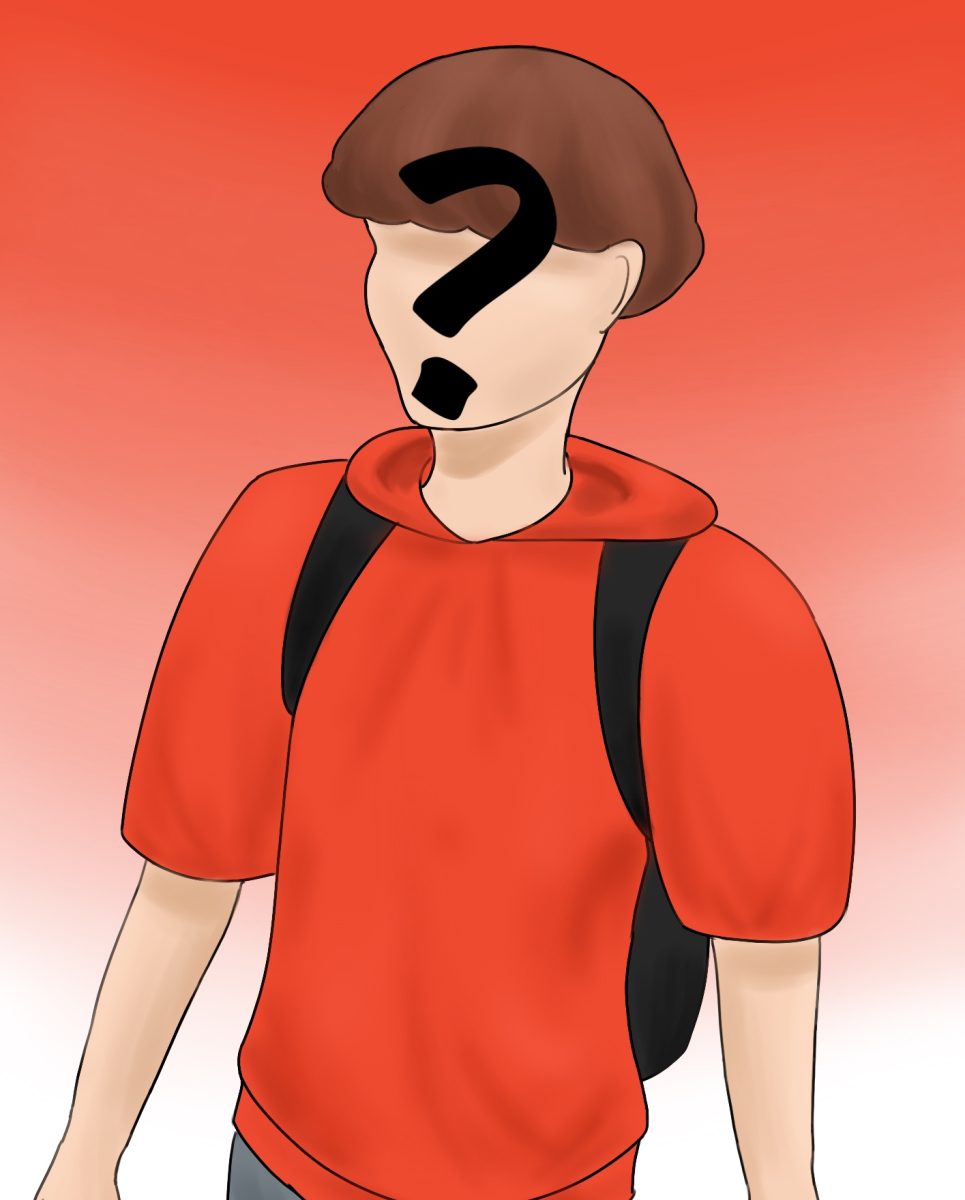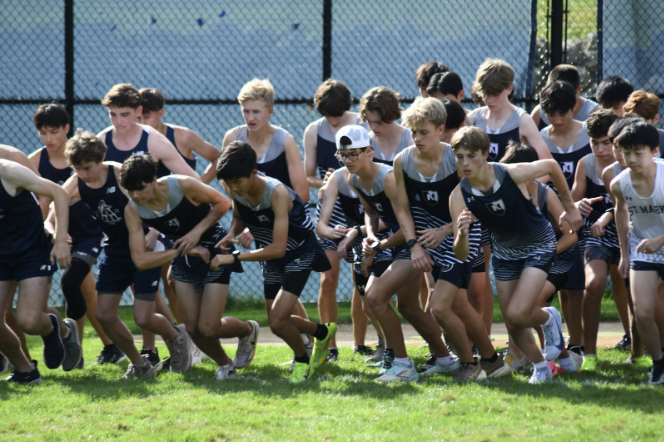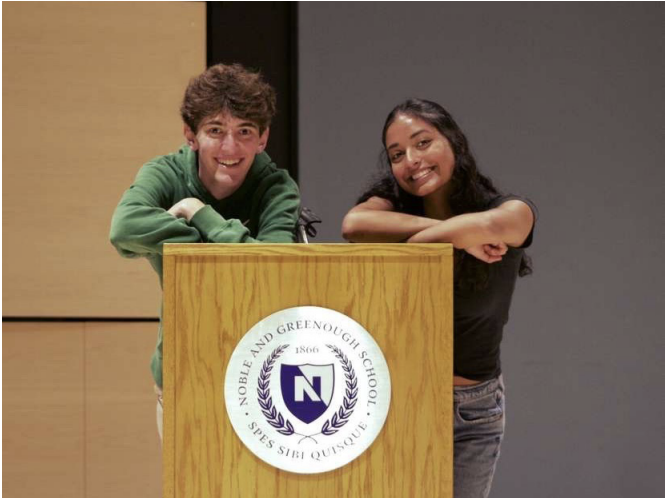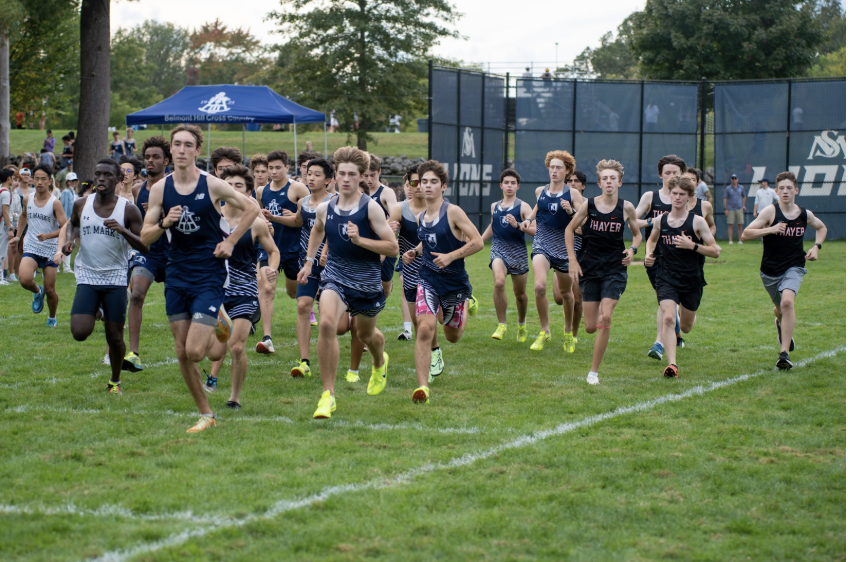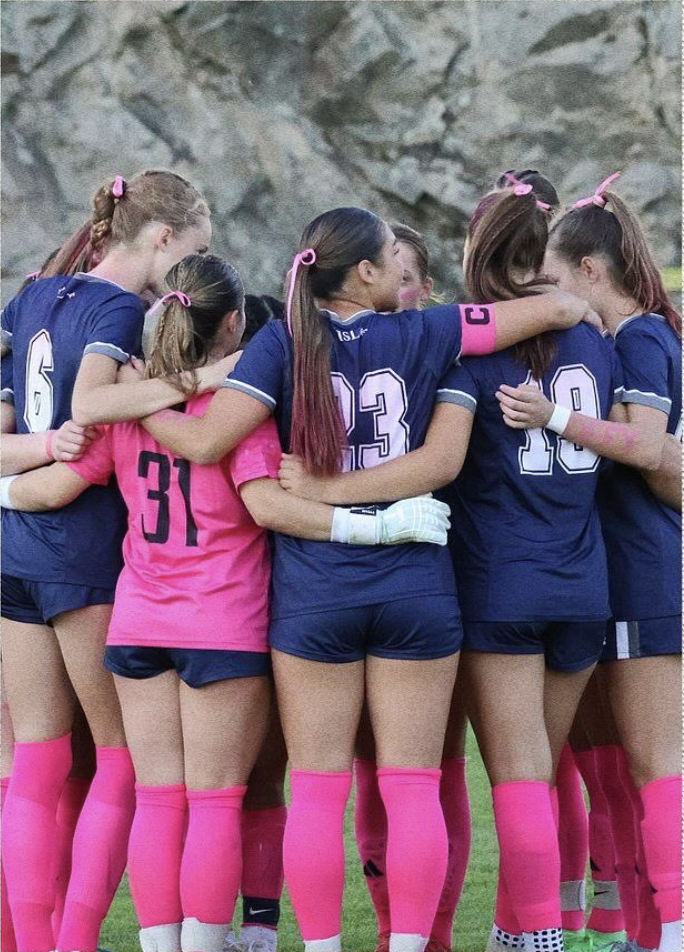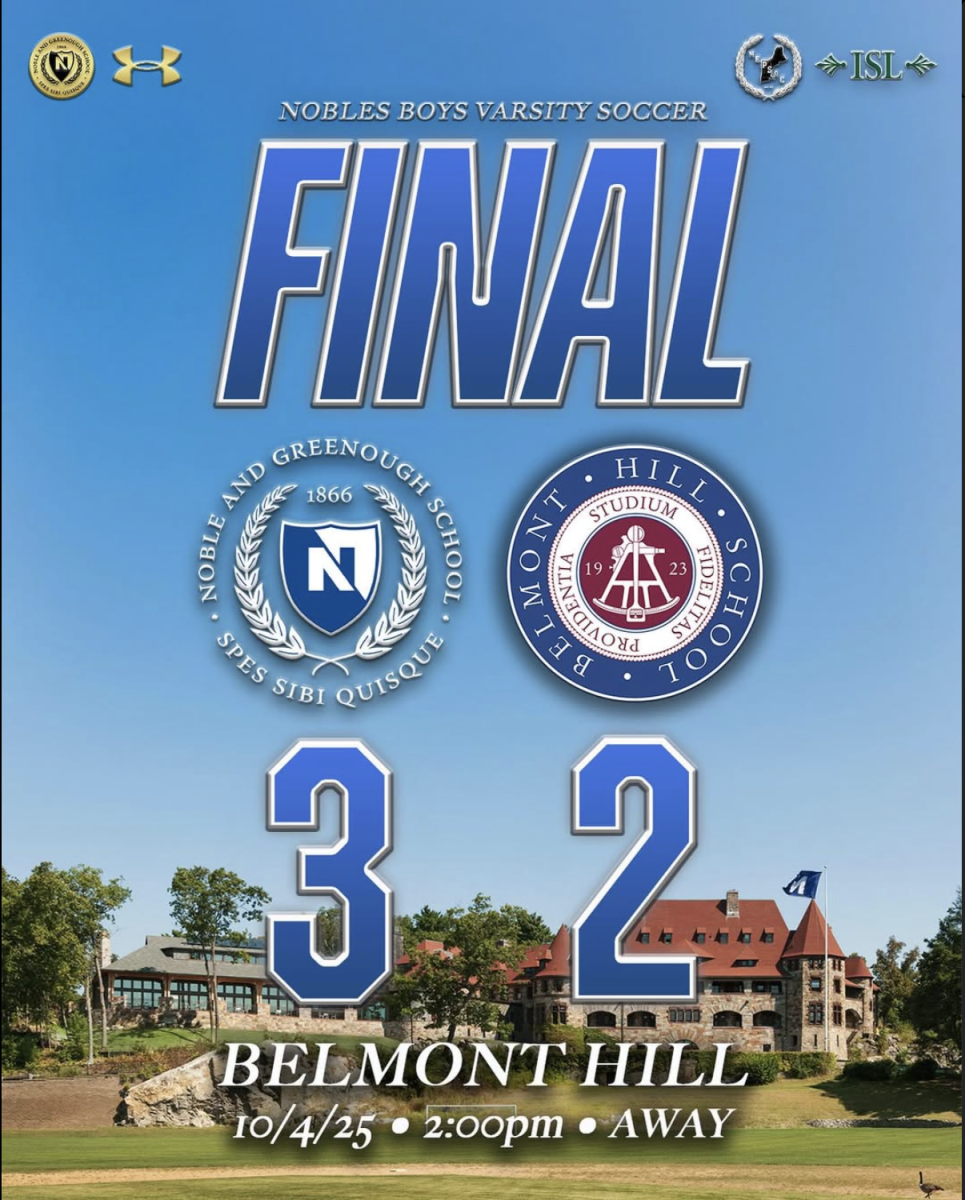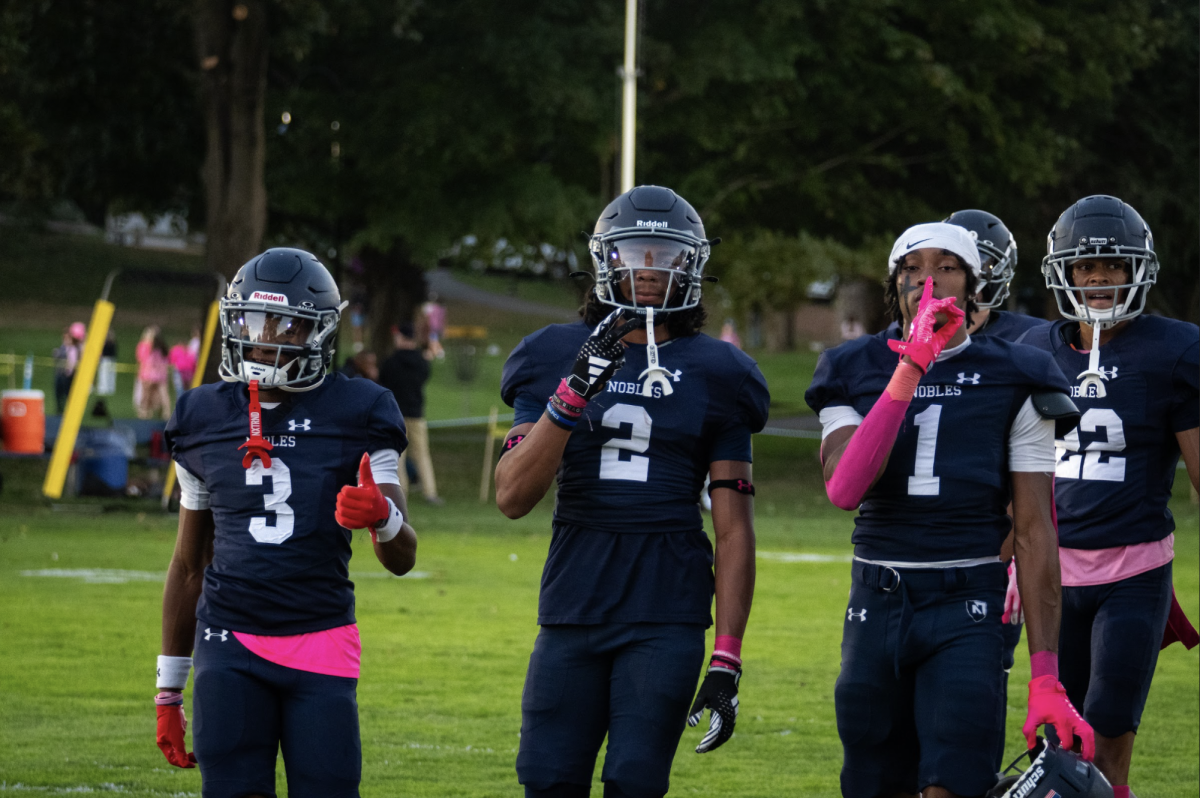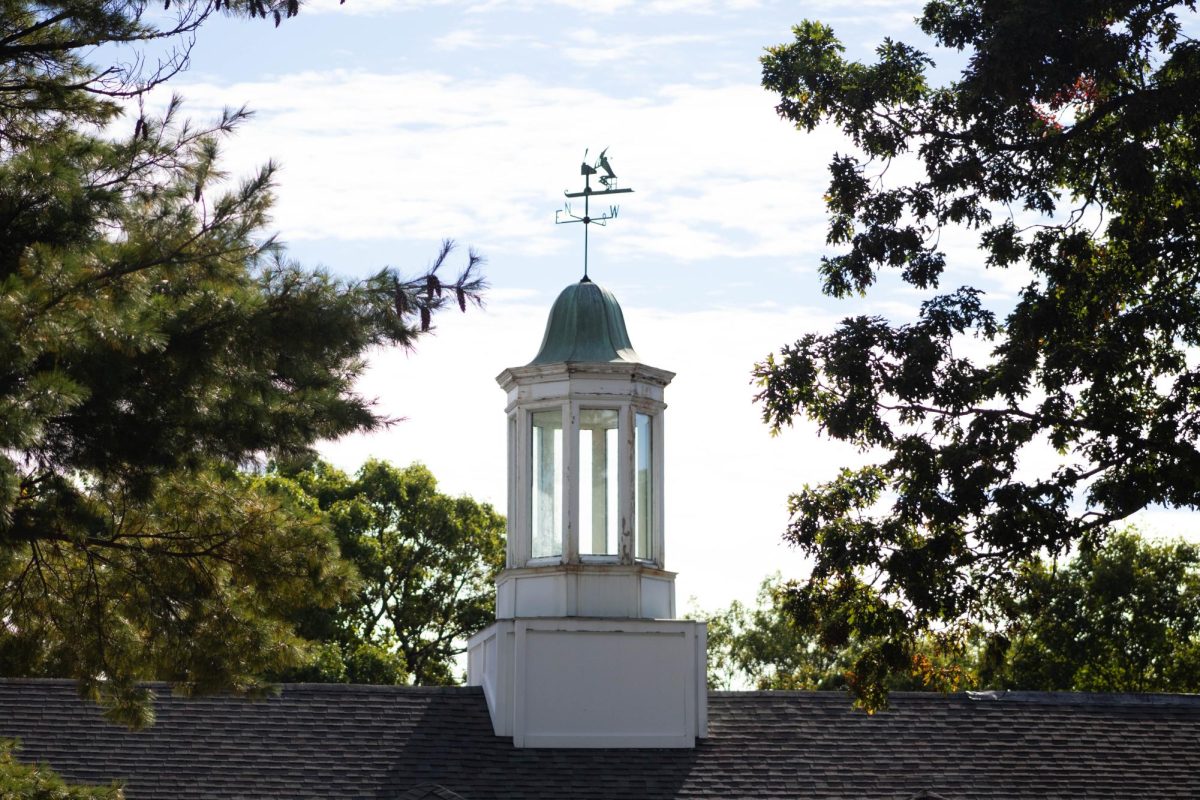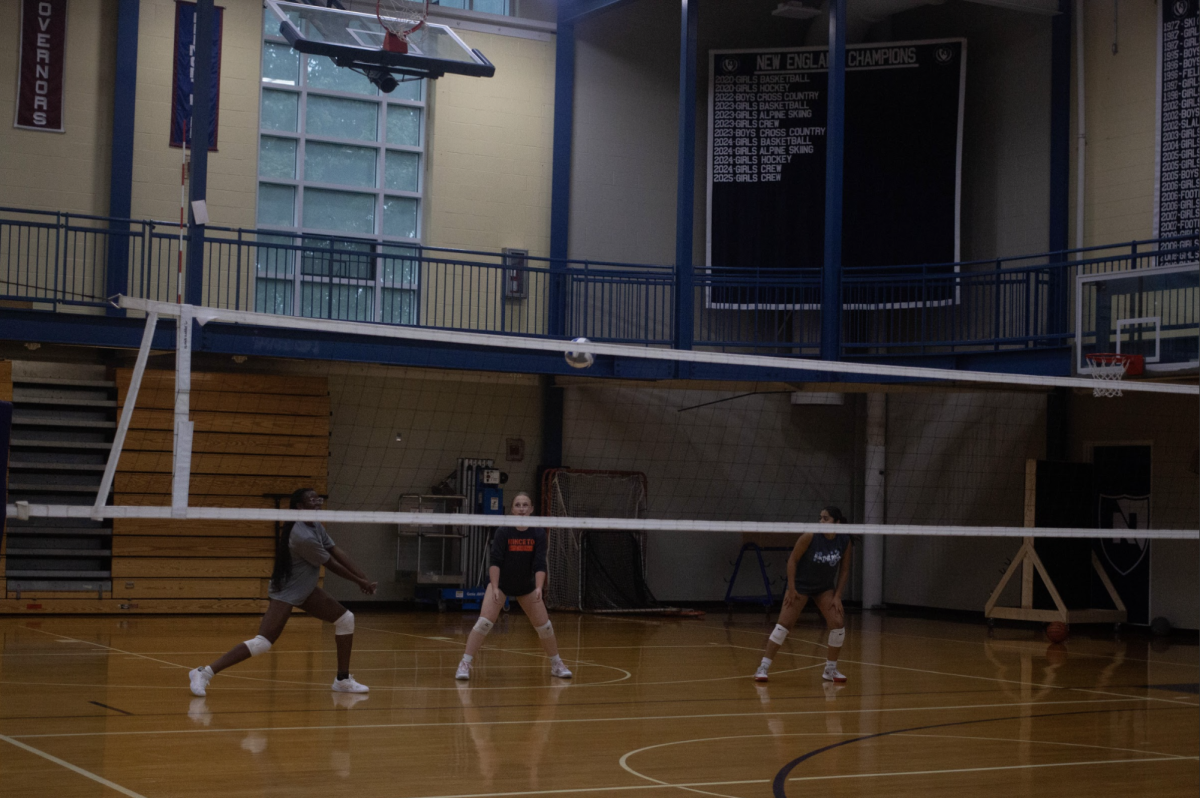The renovation of Shattuck Schoolhouse has turned all eyes toward the building and its historical architecture. Gazing up at the building, one’s eye might catch a particular one of these features: the weathervane. The figure is incredibly distinct from the typical rooster that appears on so many New England homes. Former Head of Middle School John Gifford (N ’86) recalled his many years of believing the weathervane to be a student wearing a dunce hat, which was shaped like a cone and used to punish students decades ago. The mysterious and unusual nature of the weathervane leaves Nobles students wondering, What does it depict, and, more importantly, Why?
The first potential source of information was school archivist Nadine Richardson. She holds records dating back to Shattuck’s original construction, completed by architect William Perry (N ’1901). A folder of images had the most promising clues about the weathervane’s origin. While it contained pictures of the Shattuck centerpiece, those lacked dates and provided no information about the weathervane’s installation. Yet, the folder also included an image of the Old Gym (built in 1928). This photo showed a different weathervane in a similar style, this time with a character riding a surfboard or possibly skiing.
The finding of this image suggested a greater story, so Richardson and Librarian Emily Tragert ventured to the archives’ out-of-school storage to search for more clues. There, they found an excerpt from a Nobles Bulletin (now the Nobles Magazine) from Winter/Spring 1987.
“‘The weathervane on the Schoolhouse is said to have been designed with Russell Hepburn in mind’ – at least so his father, who was architect of the then new classroom building [Shattuck Schoolhouse], told Mr. Wiggins, then headmaster,” The Bulletin said.
With this clue, further research on the architectural firm helped pinpoint precisely when the weathervane was mounted. While Perry was the lead architect on the original 1921 design of the schoolhouse, Russell’s father, Andrew Hepburn, and Thomas Mott Shaw joined Perry in expanding the building in 1926. The trio’s founding of a renowned architectural firm, Perry, Shaw, and Hepburn, in 1923, brought about this transition. Original requests for inspection of Shattuck on the Secretary of State database confirmed this change. They showed Perry as Shattuck’s sole architect in 1922 and the full firm working on the project by May 1926. Thus, the weathervane, supposedly inspired by Hepburn’s son, had to have been put in sometime after Hepburn joined the project in 1926.
Regardless of the weathervane’s exact intention and date of installation, it has continued to have an impact on the school.
“I remember someone doing a rendering of the boy at the desk, and that being used in either an annual report or a bulletin,” Gifford said.
While the weathervane has become more inconspicuous over the years, it has been a symbol of Shattuck and the school since its original implementation in 1926. will continue to be in this new season of the beloved Shattuck schoolhouse.




